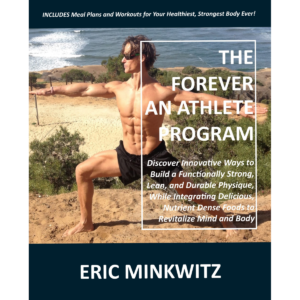What to expect during your first week following ACL reconstruction using an autograft
In my previous entry “Overview of ACL Injury Prevention”, I discussed some of the mechanisms of force which can produce a non-contact ACL injury, as well as described a few of the preventative techniques. These include strengthening the hip complex, stretching, proprioception, and implementing proper jumping and landing skills. Attention to injury prevention should accompany any strength and conditioning program.
Injury prevention techniques, however, are no panacea, since the more hours one logs on the football field, mogul course, basketball court, track, etc., the chances of injury will naturally creep higher. The price I pay for being very active in sports over the past 37 years and pushing myself in my own strength and conditioning regimen, is the possibility of injury. Unfortunately, I tore my ACL while making a pivot to explosion move in a basketball game. The injury occurred on my right side, where I have also had two previous hamstring injuries, and a concomitant weaker hip extensor for years.
My ACL insufficiency was identified with a positive Lachman test, KT 1000 (a device that measures anterior tibial displacement relative to the femur) score of 3.5mm variation, and an MRI (which showed a partial tear) at Kerlan Jobe, a well-regarded sports medicine center. I also had a positive Lachman test at SMI-LA, a premier sports physical therapy center. Thus, my ACL reconstruction and recovery adventure has commenced in very quick fashion.
I chose to use the bone-patella tendon-bone autograph, since I am more comfortable using my own tissue and bone as my new graft, despite the greater initial morbity associated with harvesting my own tendon and bone. My surgeon removed my former ACL “cyclops lesion”, performed the graft harvesting, and fixated the graft with sufficient tautness. During that first post operative afternoon, I was ensconced in the anaesthesia fog. I had difficulty remembering things during the first 2-3 days, so it is prudent to have someone reliable at home with you during this time. I was grateful for my girlfriend and Mom in assisting me in remembering the exercises I performed and the times I took pain meds.
The PT protocol is initiated literally the moment you step foot in the house. The first device you use is the Continuous Passive Motion machine, which slowly flexes and extends your knee in an effort to reduce edema and prevent arthrofibrosis. My protocol stated that I needed to increase the degrees of flexion by 50 in eight days. This requires being strapped in to the CPM for 6-8 hours. Additional exercises include the prone passive knee extension, which was the most painful, using a towel roll under the heel, for 20-30 minutes a time. Quad sets are initiated slowly at around day 3, and constitute a volitional contraction of your quad muscles, a 3 second hold, and then a repeat for up to 50+ reps a day. The vasoneumatic icing machine was used throughout the day. My favorite exercise was partial weight bearing and walking with crutches, my Mom, and my dog. The glorious sun and California breeze felt so therapeutic to me. I truly do appreciate the importance of the “external” effects of fresh air and home cooked meals during the recovery process! Week 1 is finished…




Leave A Comment